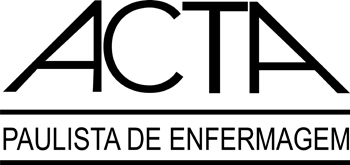| ICU turnover |
|
|
|
|
|
| VAP |
−0.1356 |
−0.5666 |
0.3536 |
0.5915 |
No correlation |
| MV-day |
0.0116 |
−0.4577 |
0.4759 |
0.9634 |
No correlation |
| Incidence of PAV/1000 MV-day |
−0.2023 |
−0.6114 |
0.2922 |
0.4208 |
No correlation |
| CLABSI |
−0.0996 |
−0.5413 |
0.3851 |
0.6940 |
No correlation |
| CVC-day |
0.1265 |
−0.3618 |
0.5603 |
0.6170 |
No correlation |
| Incidence of CLABSI /1000 CVC-day |
−0.1933 |
−0.6055 |
0.3007 |
0.4422 |
No correlation |
| CAUTI |
−0.0077 |
−0.4729 |
0.4608 |
0.9758 |
No correlation |
| IUC-day |
0.0493 |
−0.4274 |
0.5045 |
0.8460 |
No correlation |
| Incidence of CAUTI /1000 IUC-day |
−0.0915 |
−0.5355 |
0.3922 |
0.7181 |
No correlation |
| Absenteeism |
|
|
|
|
|
| VAP |
−0.3839 |
−0.7215 |
0.1011 |
0.1157 |
No correlation |
| MV-day |
−0.5726 |
−0.8202 |
−0.1443 |
0.0130 |
No correlation |
| Incidence of VAP/1000 MV-day |
−0.1103 |
−0.5489 |
0.3759 |
0.6631 |
No correlation |
| CLABSI |
−0.5259 |
−0.7971 |
−0.0783 |
0.0250 |
Moderate Negative Correlation |
| CVC-day |
−0.4517 |
−0.7586 |
0.0193 |
0.0599 |
No correlation |
| Incidence of CLABSI /1000 CVC-day |
−0.4867 |
−0.7770 |
−0.0257 |
0.0405 |
Moderate Negative Correlation |
| CAUTI |
−0.5803 |
−0.8240 |
−0.1556 |
0.0116 |
Moderate Negative Correlation |
| IUC-day |
−0.4911 |
−0.7793 |
−0.0315 |
0.0385 |
Moderate Negative Correlation |
| Incidence of CAUTI /1000 IUC-day |
−0.4308 |
−0.7474 |
0.0451 |
0.0743 |
No correlation |
| Patient-day |
|
|
|
|
|
| VAP |
0.7097 |
0.3632 |
0.8838 |
0.0010 |
Strong Positive Correlation |
| MV-day |
0.8924 |
0.7295 |
0.9595 |
0.0000 |
Strong Positive Correlation |
| Incidence of VAP/1000 MV-day |
0.1693 |
−0.3231 |
0.5896 |
0.5018 |
No correlation |
| CLABSI |
0.8640 |
0.6656 |
0.9483 |
0.0000 |
Strong Positive Correlation |
| CVC-day |
0.8330 |
0.5991 |
0.9359 |
0.0000 |
Strong Positive Correlation |
| Incidence of CLABSI /1000 CVC-day |
0.5641 |
0.1320 |
0.8161 |
0.0147 |
Moderate Positive Correlation |
| CAUTI |
0.5504 |
0.1124 |
0.8093 |
0.0179 |
Moderate Positive Correlation |
| IUC-day |
0.8543 |
0.6445 |
0.9445 |
0.0000 |
Strong Positive Correlation |
| Incidence of CAUTI /1000 IUC-day |
0.3199 |
−0.1728 |
0.6845 |
0.1956 |
No correlation |
| Bed-day |
|
|
|
|
|
| VAP |
0.6067 |
0.1951 |
0.8366 |
0.0076 |
Moderate Positive Correlation |
| MV-day |
0.7833 |
0.4988 |
0.9154 |
0.0001 |
Strong Positive Correlation |
| Incidence of VAP/1000 MV-day |
0.0754 |
−0.4058 |
0.5238 |
0.7663 |
No correlation |
| CLABSI |
0.7474 |
0.4309 |
0.9002 |
0.0004 |
Strong Positive Correlation |
| CVC-day |
0.7663 |
0.4662 |
0.9082 |
0.0002 |
Strong Positive Correlation |
| Incidence of CLABSI /1000 CVC-day |
0.4334 |
−0.0420 |
0.7488 |
0.0724 |
Moderate Positive Correlation |
| CAUTI |
0.4729 |
0.0078 |
0.7698 |
0.0475 |
Moderate Positive Correlation |
| IUC-day |
0.7537 |
0.4426 |
0.9029 |
0.0003 |
Strong Positive Correlation |
| Incidence of CAUTI /1000 IUC-day |
0.3639 |
−0.1240 |
0.7101 |
0.1376 |
No correlation |
| Occupation |
|
|
|
|
|
| VAP |
0.5438 |
0.1031 |
0.8060 |
0.0197 |
Moderate Positive Correlation |
| MV-day |
0.6568 |
0.2740 |
0.8600 |
0.0031 |
Moderate Positive Correlation |
| Incidence of VAP/1000 MV-day |
0.2593 |
−0.2362 |
0.6477 |
0.2988 |
No correlation |
| CLABSI |
0.6492 |
0.2616 |
0.8565 |
0.0036 |
Moderate Positive Correlation |
| CVC-day |
0.5442 |
0.1036 |
0.8062 |
0.0196 |
Moderate Positive Correlation |
| Incidence of CLABSI /1000 CVC-day |
0.5486 |
0.1099 |
0.8084 |
0.0184 |
Moderate Positive Correlation |
| CAUTI |
0.4550 |
−0.0151 |
0.7604 |
0.0578 |
No correlation |
| IUC-day |
0.6087 |
0.1982 |
0.8376 |
0.0073 |
Moderate Positive Correlation |
| Incidence of CAUTI /1000 IUC-day |
0.1658 |
−0.3263 |
0.5872 |
0.5109 |
No correlation |
| ICU Headcount |
|
|
|
|
|
| VAP |
0.6227 |
0.2197 |
0.8442 |
0.0058 |
No correlation |
| MV-day |
0.8282 |
0.5891 |
0.9339 |
0.0000 |
No correlation |
| Incidence of VAP/1000 MV-day |
0.0718 |
−0.4087 |
0.5212 |
0.7770 |
No correlation |
| CLABSI |
0.7611 |
0.4564 |
0.9060 |
0.0002 |
No correlation |
| CVC-day |
0.7718 |
0.4766 |
0.9106 |
0.0002 |
No correlation |
| Incidence of CLABSI /1000 CVC-day |
0.4972 |
0.0395 |
0.7824 |
0.0358 |
No correlation |
| CAUTI |
0.5661 |
0.1348 |
0.8170 |
0.0143 |
No correlation |
| IUC-day |
0.7958 |
0.5234 |
0.9206 |
0.0001 |
No correlation |
| Incidence of CAUTI /1000 IUC-day |
0.4298 |
−0.0464 |
0.7468 |
0.0751 |
No correlation |

 Healthcare-associated infections in the Intensive Care Unit during the COVID-19 pandemic
Healthcare-associated infections in the Intensive Care Unit during the COVID-19 pandemic